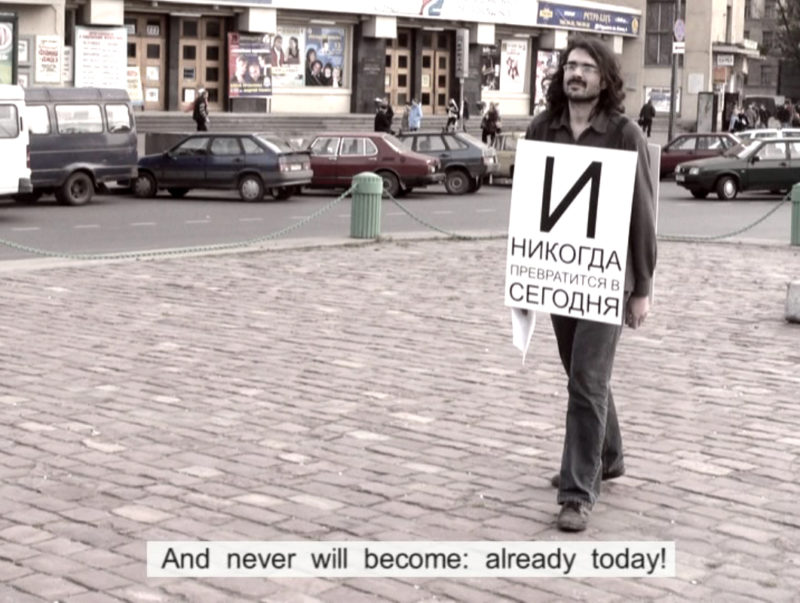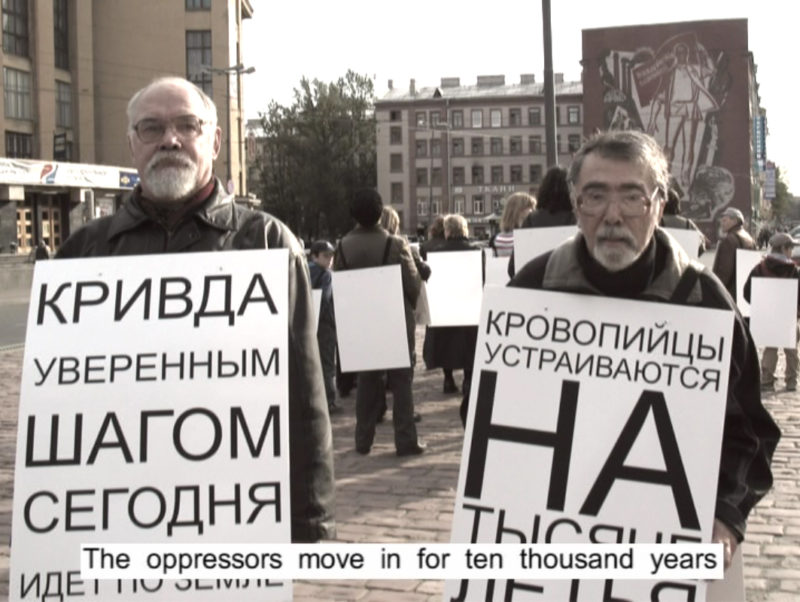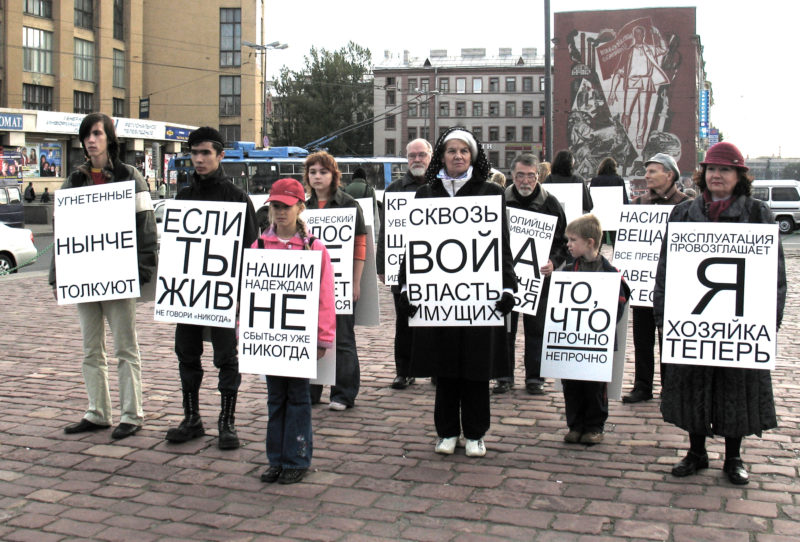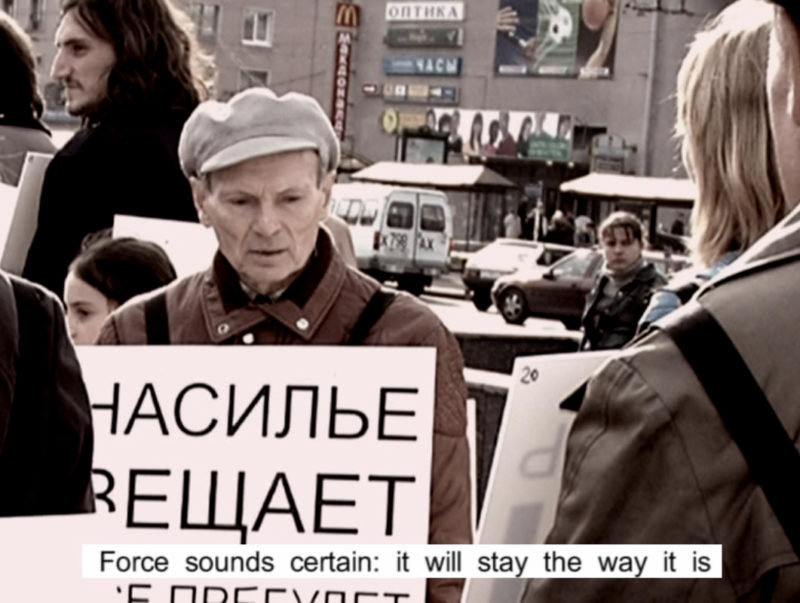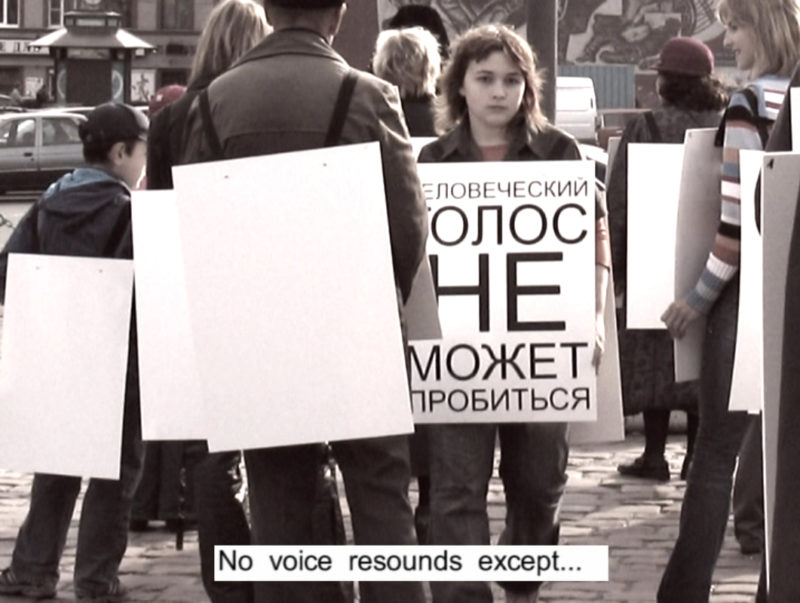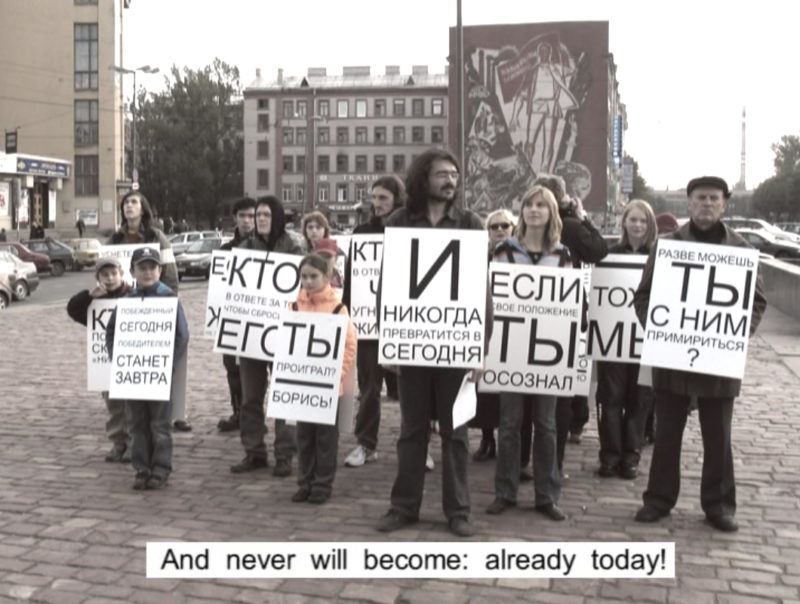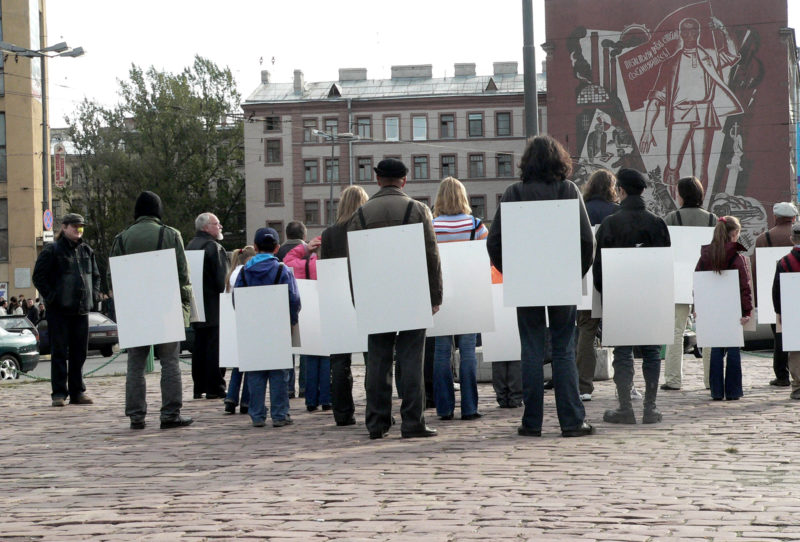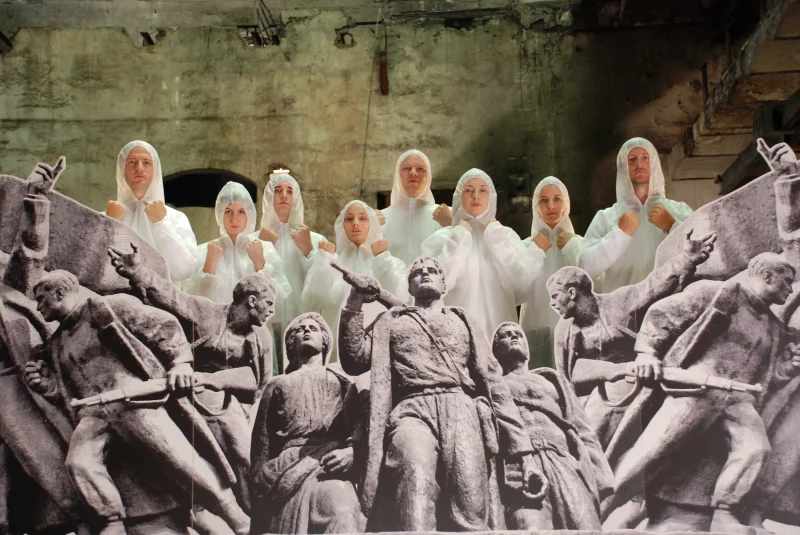 Chto Delat, still from Parisan Songspiel, 2009
Chto Delat, still from Parisan Songspiel, 2009
The collective Chto Delat (What is to be done?) was founded in early 2003 in St. Petersburg by a workgroup of artists, critics, philosophers, and writers from St. Petersburg, Moscow, and Nizhny Novgorod to merge political theory, art, and activism.
The group was constituted in May 2003 in St. Petersburg in an action called The Refoundation of Petersburg. Shortly afterward, the original, as yet nameless core group began publishing an international newspaper called Chto Delat?.
The name of the group derives from a novel by the Russian 19th-century writer Nikolai Chernyshevsky, and immediately brings to mind the first socialist worker’s self-organization in Russia, which Lenin actualized in his own publication, What is to be done?1 (1902).
Chto Delat sees itself as a self-organized platform for various cultural activities intent on politicizing knowledge production through redefinitions of an engaged autonomy for cultural practice today.

Utopian Days – Freedom was an exhibition at the Total Museum of Contemporary Art, Seoul, South Korea’s first private art museum. Later it was shown in the same city at the Nowon Culture and Arts Center.
Artists: Adel Abdessemed, Lida Abdul, Phil America, Ivan Argote, Chim↑Pom, Minerva Cuevas, Chto Delat?, Cyprien Gaillard, Yang-Ah Ham, Andre Hemer, Tehching Hsieh, Zhang Huan, Jani Leinonen, Klara Liden, Armando Lulaj, Matt McCormick, Filippo Minelli, Wang Qingsong, Andres Serrano, Manit Sriwanichpoom, Clemens von Wedemeyer, Kacey Wong, Xijing Men, He Yunchang.
Exhibited: Angry Sandwich People or In Praise of Dialectics, 2006
This slideshow and audio piece emerged from an inner group discussion on how it might be possible to make an artistic statement in memory of the centennial anniversary of the first Russian revolution of 19052.

In 2004, the collective carried out an extensive artistic study of the contemporary urban environment of a working-class neighborhood in Petersburg.
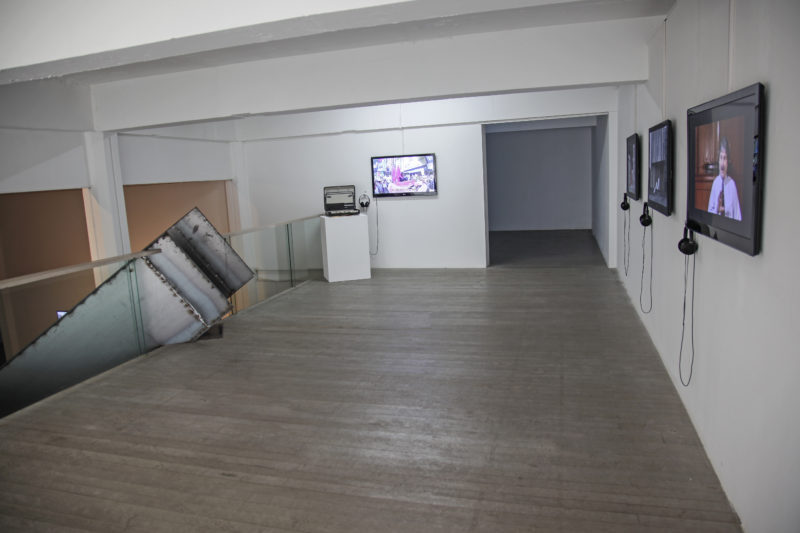
As the center of the worker’s uprising in 1905, this neighborhood later became the site for one of the most ambitious and comprehensive constructivist projects in building a new, socialist Leningrad.
A year later, they decided to return to this neighborhood to carry out an action and shoot a video that might be capable of expressing our relationship to the history of this place.
Realized by Olga Egorova (Tsaplya), Nikolay Oleynikov and Dmitry Vilensky
Courtesy of KOW, Berlin
